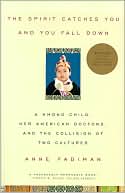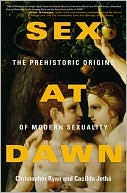Infanticide: Comparative and Evolutionary Perspectives
Recent field studies of a variety of mammalian species reveal a surprisingly high frequency of infanticide—the killing of unweaned or otherwise maternally dependent offspring. Similarly, studies of birds, fish, amphibians, and invertebrates demonstrate egg and larval mortality in these species, a phenomenon directly analogous to infanticide in mammals. In this collection, Hausfater and Hrdy draw together work on animal and human infanticide and place these studies in a broad evolutionary and...
Search in google:
Recent field studies of a variety of mammalian species reveal a surprisingly high frequency of infanticide-the killing of unweaned or otherwise maternally dependent offspring. Similarly, studies of birds, fish, amphibians, and invertebrates demonstrate egg and larval mortality in these species, a phenomenon directly analogous to infanticide in mammals. In this collection, Hausfater and Hrdy draw together work on animal and human infanticide and place these studies in a broad evolutionary and comparative perspective.Infanticide presents the theoretical background and taxonomic distribution of infanticide, infanticide in nonhuman primates, infanticide in rodents, and infanticide in humans. It examines closely sex allocation and sex ratio theory, surveys the phylogeny of mammalian interbirth intervals, and reviews data on sources of egg and larval mortality in a variety of invertebrate and lower vertebrate species. Dealing with infanticide in nonhuman primates, two chapters critically examine data on infanticide in langurs and its broader theoretical implications. By reviewing sources of infant mortality in populations of small mammals and new laboratory analyses of the causes and consequences of infanticide, this work explores such issues as the ontogeny of infanticide, proximate cues of infants and females which elicit infanticidal behavior in males, the genetical basis of infanticide, and the hormonal determinants.Hausfater and Sarah Blaffer Hrdy, through their selection of materials for this book, evaluate the frequency, causes, and function of infanticide. Historical, ethnographic, and recent data on infanticide are surveyed. Infanticide summarizes current research on the evolutionary origins and proximate causation of infanticide in animals and man. As such it will be indispensable reading for anthropologists and behavioral biologists as well as ecologists, psychologists, demographers, and epidemiologists.
Preface xiComparative and Evolutionary Perspectives on Infanticide: Introduction and Overview Sarah Blaffer Hrdy Glenn Hausfater xiiiList of Contributors and Symposium Participants xxxviiBackground and Taxonomic ReviewsInfanticide, Siblicide, and Avian Nestling Mortality Douglas W. Mock 3Infanticide in Carnivores Craig Packer Anne E. Pusey 31Cannibalism of Early Life Stages in Fishes Wallace J. Dominey Lawrence S. Blumer 43The Influence of Conspecifics on Egg and Larval Mortality in Amphibians Martin P. Simon 65Intraspecific Predation and "Infant Killing" Among Invertebrates Gary A. Polis 87Mammalian Reproduction: Constraints on the Evolution of Infanticide Virginia D. Hayssen 105The Evolutionary Ecology of Sex Allocation: A Primer Eric L. Charnov 125Infanticide in Nonhuman Primates: A Topic of Continuing DebateInfanticide in Nonhuman Primates: An Introduction and Perspective Glenn Hausfater 145Infanticide by Adult Males in Three Primate Species of the Kibale Forest, Uganda: A Test of Hypotheses Lysa Leland Thomas T. Struhsaker Thomas M. Butynski 151Infanticide in Red Howler Monkeys (Alouatta seniculus) Carolyn M. Crockett Ranka Sekulic 173Infanticide in Two Populations of Savanna Baboons D. Anthony Collins Curt D. Busse Jane Goodall 193Infanticide in Mountain Gorillas (Gorilla gorilla beringei) with Comparative Notes on Chimpanzees Dian Fossey 217Reproductive Parameters, Adult-Male Replacements, and Infanticide Among Free-Ranging Langurs (Presbytis entellus) at Jodhpur (Rajasthan), India Christian Vogel Hartmut Loch 237Infanticide in Langurs: Strategies, Counterstrategies, and Parameter Values Glenn Hausfater 257Infant Killing and Male Reproductive Strategies in Langurs (Presbytis entellus) Jane Boggess 283Proximate Factors of Infanticide Among Langurs at Dharwar: A Reply to Boggess Yukimaru Sugiyama 311Assumptions and Evidence Regarding the Sexual Selection Hypothesis: A Reply to Boggess Sarah Blaffer Hrdy 315Infanticide in Rodents: Questions of Proximate and Ultimate CausationInfanticidal Behavior in Male and Female Rodents: Sectional Introduction and Directions for Future Research Jay B. Labov 323Causes and Consequences on Infanticide in Populations of Rodents Ronald J. Brooks 331Infanticide and the Evolution of Pregnancy Block in Rodents U. William Huck 349Infanticide by Male and Female Mongolian Gerbils: Ontogeny, Causation, and Function Robert W. Elwood Malcolm C. Ostermeyer 367Psychobiological Determinants Underlying Infanticide in Mice Bruce Svare John Broida Craig Kinsley Martha Mann 387Proximate and Ultimate Causes of Infanticide and Parental Behavior in Male House Mice Frederick S. vom Saal 401Infanticide in Humans: Ethnography, Demography, Sociobiology, and HistoryConcepts and Classification in the Study of Human Infanticide: Sectional Introduction and Some Cautionary Notes Mildred Dickemann 427Infanticide in Human Populations: Societal and Individual Concerns Susan C. M. Scrimshaw 439Deferred Infanticide: Excess Female Mortality during Childhood Sheila Ryan Johansson 463A Sociobiological Analysis of Human Infanticide Martin Daly Margo Wilson 487Ayoreo Infanticide: A Case Study Paul E. Bugos, Jr. Lorraine M. McCarthy 503Bibliography 521Index 589
\ From the PublisherSelected by Choice as one of the 1984 1985 "Outstanding Academic Books" "The book is eloquent testimony to the invigorating effect that Hrdy's 'classification of infanticide according to natural selectionist principles has had on the study of a phenomenon that previously had been primarily considered as the pathological consequences of overcrowding or other disturbing influences' it should convince even the most doubtful that, in most instances, infanticide is a natural behavior that can be interpreted in the context of modern evolutionary theory."\ —Gail Michener in Science "The first systematic attempt to review what is known about infanticide and to place this knowledge in selectionist perspective... a stunning achievement."\ —Don Symons in American Journal of Primatology "This volume... may become a classic in the field. It is a remarkable demonstration of how our concepts of behavior continue to be challenged in the context of modern evolutionary biology."\ —David Gubernick in Contemporary Psychology "Infanticide: Comparative and Evolutionary Perspectives focuses on an issue of central importance to the behavioral sciences and is packed with useful information. For those interested in the mechanisms and evolution of behavior and in possible links between human and nonhuman species, it cannot be recommended too strongly."\ —Robert Seyfarth in American Journal of Physical Anthropology "Given the quality of the papers (and) the excellent editing... this volume is overall one of the best to come out of any publisher in a long time."\ —M. Estelle Smith in The Annals of the American Academy “Infanticide, as Hausfater and Hrdy note in an excellent introduction to this book, can no longer be considered a rare, pathological aberration brought about by unusual conditions…. Infanticide will be the major source of comparative and theoretical perspectives on the subject for some time to come. It is well balanced between data and theory…. [A] highly recommended book.” —Eugenie C. Scott, The Quarterly Review of Biology “The strength of this book is the breadth of its taxonomic coverage. The reader is left with an appreciation of the widespread occurrence of infanticide in organisms ranging from invertebrates to humans…. It is a must read for anyone interested in the mechanisms and evolutionary development of behavior.” —Kenneth E. Glander, American Anthropologist “In sociology, we tend to think of infanticide as either an exotic practice of very primitive tribes or the subject of a midwinter newspaper story, involving a very young mother, a green garbage bag, and a flood of calls to the local hospital offering to adopt the rescued infant. Although we know more about infanticide than this—it is part of a pattern of discrimination against women in some parts of the world and an alternative to illegal abortion in other parts—nothing in the sociological literature on infanticide prepares us to deal with the flood of evidence and theorizing found in this book…. [T]he most striking conclusion that emerges from this book is the depth of human denial and refusal to consider infanticide, despite evidence of its frequency…. Evolutionary theory provides a basis for a more realistic view of human nature, both in the impulses of parents to be selective in their investments, and in the moral-ethical-aesthetic tendencies that lead us to evaluate infanticide as repugnant and to reject and deny its existence.” —Nancy Howell, Contemporary Sociology\ \








